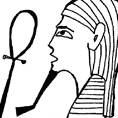Culture is defined by the UNESCO Universal Declaration on Cultural Diversity as the set of distinctive spiritual, material, intellectual and emotional features of society or a social group, […] it encompasses, in addition to art and literature, lifestyles, ways of living together, value systems, traditions and beliefs.

Okeanos was, in Greek Mythology, the titan and protogonos (primeval god) of the great Earth-encircling river Okeanos, the source of all the Earth’s freshwater, including rivers, wells, springs and rain clouds. His wife was the Earth goddess Tethys, who distributed his flow to the Earth via subterranean caverns. She gave birth to their Potamos sons (rivers) and Okeanis daughters (springs and fountains).
The southwest United States and northwest Mexico are in a rain shadow cast by mountain ranges to the west. Rainfall is light and unreliable. The indigenous people who live here welcome rain into their lives and land, praying for the blessing of rain through a variety of ceremonies and creative expressions. Some of these are permanent, such as embroidered figures on their ceremonial garment. Others are intended to be ephemeral, such as ceremonial body painting or sand paintings. They can also take the form of music, song, oration, poetry and prayer.
Tlaloc was the Aztec rain god; his name means He Who Makes Things Sprout. During Aztec times (14th to 16th centuries), Tlaloc’s cult was extremely important and spread throughout Mexico. He was greatly feared. He could send out the rain or provoke drought and hunger. He hurled lightning upon the earth and unleashed devastating hurricanes.
In striking contrast to the early Indus civilization and those of Sumer, Akkad, Babylonia, and Assyria in Mesopotamia, the great Egyptian civilization in the Nile River valley sustained itself during some 5,000 years without interruption. It lasted through warfare and conquests by the Persians, Greeks, Romans, Arabs, and Turks, as well as through outbreaks of pandemic disease that devastated its population. Yet its agricultural foundation remained intact. The sustainability of Egyptian agriculture has come into question only recently. In response to a 20-fold population increase over the last two centuries – from 3 million in the early 1800s to 66 million today – Egypt replaced its time-tested agriculture based on the Nile’s natural flow rhythms with more intensified irrigation and flood management that required complete control of the river.
During a stop on El Hierro Island (Canarias) on his way to the Americas, Bartolomй de las Casas took interest in the aborigine Bimbachos’ culture, which was already disappearing in the 16th century. The Bimbachos devoted a cult to a tree, the Garoe (Ocotea foetens), which supplied them with abundant fresh water. This ‘holy tree’ was capable of capturing the water held in the mist and drizzle, which allowed for agriculture in an area with very low rainfall. The Garoe was uprooted by a hurricane in 1610. Curiously, its disappearance coincided with that of the Bimbachos culture on El Hierro Island.
According to Andean religion the Creator emerged from Lake Titicaca to shape the Earth and the first people. Because of its sacred nature, the lake’s shores are ringed with the ruins of small shrines and temples, some dating as far back as 700 BC. Researchers believe that the ancient city of Tiwanaku was originally one of these small religious centres.
Water plays a central role in many religions and beliefs around the world. A source of life, it represents birth and rebirth. Water cleans the body, and by extension purifies it, and these two main qualities confer a highly symbolic – even sacred – status to water. Water is therefore a key element in ceremonies and religious rites.
Leonardo da Vinci described water as ‘the vehicle of nature’ (‘vetturale di natura’), believing water to be to the world what blood is to our bodies. He was also terrified by water’s destructive capacity, having witnessed great storms, and conducted numerous studies of the motion of water. Leonardo also studied water to learn to control it. Throughout his life, Leonardo was obsessed with a fear of a great water cataclysm. In his drawings and in his writings he describes terrible floods and great storms.
Information from:
the Water and Culture section of the UNESCO’s ‘Sound of our Water project’ website
the Rain in the Southwest section of the United States’ Heard Museum website
the Tlaloc – Rain God section of the Four Gods of the Elements website
the Egypt’s Nile Valley Basin Irrigation of the Water History website
the Okeanos section of the Theoi Project
Source: UNESCO Water Portal, March 2006

